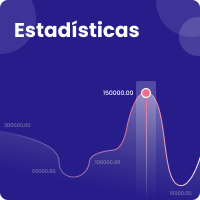The importance of numerical symbols for the development of mathematical skills
Resumen
How do young children develop numerical and mathematical skills? In this paper, I review what we have learnt over the past few decades about the foundational skills that underpin children’s numerical and mathematical development. I discuss the importance of learning the meaning of numerical symbols and review studies that show that early number symbol knowledge predicts later math skills and that training numerical symbol knowledge can enhance children’s early math skills. I close by discussing future directions.
Referencias bibliográficas
Bradley, L., & Bryant, P. E. (1978). Difficulties in auditory organisation as a possible cause of reading backwardness. Nature 271,764-747. http://doi.org/10.1038/271746a0
Bugden, S., & Ansari, D. (2011). Individual differences in children’s mathematical competence are related to the intentional but not automatic processing of Arabic numerals. Cognition, 118(1), 32–44. http://doi.org/10.1016/j.cognition.2010.09.005
Butterworth, B. (2008). Developmental dyscalculia. In J. Reed & J. W. Rogers (Eds). Child neuropsychology: Concepts, theory, and practice (pp. 357-374). Oxford: Blackwell
Chu, F. W., vanMarle, K., & Geary, D. C. (2015). Early numerical foundations of young children’s mathematical development. Journal of Experimental Child Psychology, 132, 205-212. http://doi.org/10.1016/j.jecp.2015.01.006
Cragg, L., & Gilmore, C. (2014). Skills underlying mathematics: The role of executive function in the development of mathematics proficiency. Trends in Neuroscience and Education, 3(2), 63-68.
De Smedt, B., & Boets, B. (2010). Phonological processing and arithmetic fact retrieval: Evidence from developmental dyslexia. Neuropsychologia, 48(14), 3973–3981. http://doi.org/10.1016/j.neuropsychologia.2010.10.018
De Smedt, B., & Gilmore, C. K. (2011). Defective number module or impaired access? Numerical magnitude processing in first graders with mathematical difficulties. Journal of Experimental Child Psychology, 108(2), 278–292. http://doi.org/10.1016/j.jecp.2010.09.003
De Smedt, B., Taylor, J., Archibald, L., & Ansari, D. (2010). How is phonological processing related to individual differences in children’s arithmetic skills? Developmental Science, 13(3), 508–520. http://doi.org/10.1111/j.1467-7687.2009.00897.x
Duncan, G. J., Dowsett, C. J., Claessens, A., Magnuson, K., Huston, A. C., Klebanov, P., ... & Japel, C. (2007). School readiness and later achievement. Developmental Psychology, 43(6), 1428-1446.
Holloway, I. D., & Ansari, D. (2009). Mapping numerical magnitudes onto symbols: the numerical distance effect and individual differences in children’s mathematics achievement. Journal of Experimental Child Psychology, 103(1), 17–29. http://doi.org/10.1016/j.jecp.2008.04.001
Hulme, C., & Snowling, M. J. (2013). Learning to read: What we know and what we need to understand better. Child Development Perspectives, 7(1), 1–5. http://doi.org/10.1111/cdep.12005
Jordan, N. C., Glutting, J., Ramineni C, & Watkins, M. W. (2010). Validating a number sense screening tool for use in kindergarten and first grade : Prediction of mathematics proficiency in third grade. School Psychology Review, 39(2), 181–195.
Landerl, K., Bevan, A., & Butterworth, B. (2004). Developmental dyscalculia and basic numerical capacities: A study of 8–9-year-old students. Cognition, 93(2), 99-125.
Landerl, K., Göbel, S. M., & Moll, K. (2013). Core deficit and individual manifestations of developmental dyscalculia (DD): The role of comorbidity. Trends in Neuroscience and Education, 2(2), 38–42.
LeFevre, J. A., Fast, L., Skwarchuk, S. L., Smith‐Chant, B. L., Bisanz, J., Kamawar, D., & Penner‐Wilger, M. (2010). Pathways to mathematics: Longitudinal predictors of performance. Child Development, 81(6), 1753-1767.
Lyons, I. M., & Ansari, D. (2015). Numerical order processing in children: From reversing the distance-effect to predicting arithmetic, 9(4), 207–221.
Lyons, I. M., Price, G. R., Vaessen, A., Blomert, L., & Ansari, D. (2014). Numerical predictors of arithmetic success in grades 1-6. Developmental Science, 17(5), 1–13. http://doi.org/10.1111/desc.12152
Mazzocco, M. M., Feigenson, L., & Halberda, J. (2011). Preschoolers' precision of the approximate number system predicts later school mathematics performance. PLoS one, 6(9), e23749.
Merkley, R., & Ansari, D. (2016). Why numerical symbols count in the development of mathematical skills: Evidence from brain and behavior. Current Opinion in Behavioral Sciences, 10, 14–20. http://doi.org/10.1016/j.cobeha.2016.04.006
Mussolin, C., Mejias, S., & Noël, M. P. (2010). Symbolic and nonsymbolic number comparison in children with and without dyscalculia. Cognition, 115(1), 10-25.
Nosworthy, N., Bugden, S., Archibald, L., Evans, B., & Ansari, D. (2013). A two-minute paper-and-pencil test of symbolic and nonsymbolic numerical magnitude processing explains variability in primary school children’s arithmetic competence. PloS One, 8(7), e67918. http://doi.org/10.1371/journal.pone.0067918
Purpura, D. J., Baroody, A. J., & Lonigan, C. J. (2013). The transition from informal to formal mathematical knowledge: Mediation by numeral knowledge. Journal of Educational Psychology, 105(2), 453–464. http://doi.org/10.1037/a0031753
Rousselle, L., & Noël, M.-P. (2007). Basic numerical skills in children with mathematics learning disabilities: A comparison of symbolic vs non symbolic number magnitude processing. Cognition, 102(3), 361–395. http://doi.org/10.1016/j.cognition.2006.01.005
Sella, F., Tressoldi, P., Lucangeli, D., & Zorzi, M. (2016). Training numerical skills with the adaptive videogame “The Number Race”: A randomized controlled trial on preschoolers. Trends in Neuroscience and Education, 5(1), 20–29. http://doi.org/10.1016/j.tine.2016.02.002
Skwarchuk, S. L., Sowinski, C., & LeFevre, J. A. (2014). Formal and informal home learning activities in relation to children’s early numeracy and literacy skills: The development of a home numeracy model. Journal of Experimental Child Psychology, 121, 63-84.
Vanbinst, K., Ansari, D., Ghesquière, P., & De Smedt, B. (2016). Symbolic numerical magnitude processing is as important to arithmetic as phonological awareness is to reading. Plos One, 11(3), e0151045. http://doi.org/10.1371/journal.pone.0151045
Vanbinst, K., Ghesquière, P., & De Smedt, B. (2015). Does numerical processing uniquely predict first graders’ future development of single-digit arithmetic? Learning and Individual Differences, 37, 153-160. http://doi.org/10.1016/j.lindif.2014.12.004
Wynn, K. (1990). Children's understanding of counting. Cognition, 36(2), 155-193.
Descargas
Derechos de autor 2025 MedUNAB

Esta obra está bajo una licencia internacional Creative Commons Atribución-NoComercial 4.0.
| Estadísticas de artículo | |
|---|---|
| Vistas de resúmenes | |
| Vistas de PDF | |
| Descargas de PDF | |
| Vistas de HTML | |
| Otras vistas | |
































